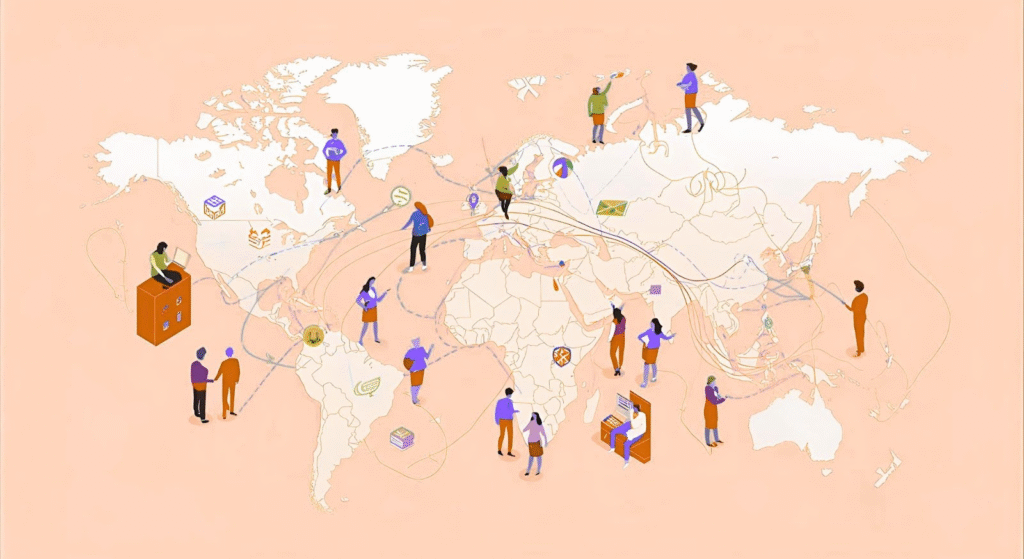International compliance have fundamentally transformed how global websites collect, process, and store user information, creating complex compliance landscapes that require sophisticated understanding of multiple jurisdictional requirements. The European Union’s General Data Protection Regulation (GDPR) established the foundation for modern privacy legislation, influencing similar laws across California, Brazil, Canada, and dozens of other jurisdictions that impose varying obligations on website operators. Organizations managing global digital presence must navigate overlapping regulatory frameworks while maintaining seamless user experiences and operational efficiency.
The complexity of international compliance extends beyond simple policy implementation to encompass technical infrastructure decisions, user interface design, data architecture planning, and ongoing monitoring systems that ensure sustained regulatory adherence. Modern privacy regulations emphasize user control, data minimization, and transparency requirements that fundamentally challenge traditional digital marketing and analytics practices. Success requires proactive compliance strategies that anticipate regulatory evolution while balancing privacy protection with business objectives and user experience optimization.
Key Takeaways
• Multi-jurisdictional compliance requires understanding overlapping privacy laws including GDPR, CCPA, LGPD, and PIPEDA that impose different obligations on global website operators
• Technical implementation strategies encompass consent management, data mapping, user rights automation, and cross-border transfer mechanisms that ensure regulatory compliance
• User experience optimization balances privacy transparency with conversion objectives through strategic consent design and privacy communication approaches
• Data governance frameworks establish systematic approaches to privacy compliance that scale across multiple jurisdictions while adapting to regulatory evolution
• Ongoing compliance monitoring ensures sustained adherence through regular auditing, policy updates, and emerging regulation assessment
• Risk mitigation strategies protect organizations from regulatory penalties while maintaining competitive advantages through privacy-centric positioning
Overview
Global website operators face increasingly complex privacy compliance requirements that demand comprehensive understanding of international data protection frameworks and practical implementation strategies. This guide examines key regulatory requirements across major jurisdictions while providing actionable approaches to achieving compliance that supports business objectives and user experience optimization. The methodology emphasizes scalable compliance frameworks that adapt to regulatory evolution while maintaining operational efficiency and competitive positioning.
Understanding Global Privacy Regulation Landscape
The international data protection regulatory environment encompasses dozens of privacy laws with varying scope, requirements, and enforcement mechanisms that affect global website operations. The European Union’s GDPR serves as the foundational framework influencing privacy legislation worldwide, establishing principles including lawful basis requirements, data subject rights, and accountability obligations that appear across multiple jurisdictions with local variations.

California’s Consumer Privacy Act (CCPA) and its successor, the California Privacy Rights Act (CPRA), create comprehensive privacy rights for California residents while imposing disclosure and deletion obligations on businesses meeting specific thresholds. Brazil’s Lei Geral de Proteção de Dados (LGPD) incorporates GDPR-inspired principles while addressing unique local requirements including data protection officer obligations and consent mechanisms tailored to Brazilian legal frameworks.
Canada’s Personal Information Protection and Electronic Documents Act (PIPEDA) and provincial privacy legislation create additional compliance layers for organizations serving Canadian users. Emerging privacy laws in Virginia, Colorado, Connecticut, and other jurisdictions continue expanding the regulatory landscape while creating opportunities for businesses that proactively embrace privacy-centric approaches.
Regulatory Convergence and Divergence
Privacy regulations demonstrate significant convergence around core principles including consent requirements, individual rights, and data minimization obligations, yet diverge substantially in implementation details, enforcement mechanisms, and jurisdictional scope. Understanding these similarities and differences enables efficient compliance strategies that address multiple regulatory requirements through unified approaches rather than jurisdiction-specific implementations.
The extraterritorial application of privacy laws means that website operators often face compliance obligations in jurisdictions where they have no physical presence, requiring careful analysis of regulatory triggering thresholds and territorial scope provisions. These requirements create compliance obligations that extend far beyond traditional concepts of jurisdiction and business presence.
GDPR Compliance Framework
GDPR compliance requires comprehensive understanding of lawful basis requirements, data subject rights, accountability obligations, and cross-border transfer restrictions that fundamentally impact website design and operation. Organizations must establish lawful bases for all personal data processing activities while implementing technical and organizational measures that demonstrate compliance with accountability principles.
The regulation’s emphasis on privacy by design and privacy by default requires integrating privacy considerations into all aspects of website development, from initial architecture planning through ongoing feature development and third-party integration decisions. Data protection impact assessments become mandatory for high-risk processing activities, requiring systematic evaluation of privacy implications and risk mitigation measures.
Data subject rights implementation includes providing mechanisms for access, rectification, erasure, portability, and objection requests while maintaining secure authentication and response procedures. These rights create ongoing operational obligations that require systematic processes and technical infrastructure capable of handling individual requests efficiently and securely.
Technical and Organizational Measures
GDPR Article 25 mandates privacy by design and privacy by default approaches that require embedding privacy protections into technical systems and organizational processes from the outset. Implementation includes data minimization techniques, purpose limitation controls, and security measures appropriate to the risk levels associated with specific processing activities.
Cross-border data transfer compliance requires implementing appropriate safeguards including Standard Contractual Clauses, Binding Corporate Rules, or adequacy decision reliance when transferring personal data outside the European Economic Area. These requirements significantly impact global website architecture and third-party service provider selection decisions.
CCPA and CPRA Compliance Requirements
California’s privacy legislation creates comprehensive consumer rights including disclosure requirements, opt-out mechanisms, and deletion obligations that apply to businesses meeting specific revenue, personal information processing, or consumer interaction thresholds. The California Privacy Rights Act enhances these requirements while introducing sensitive personal information categories and expanded consumer rights that affect website compliance obligations.
Consumer disclosure requirements mandate detailed privacy policy information including personal information categories collected, sources of collection, business purposes, and third-party sharing practices. These disclosures must be accessible through conspicuous privacy policy links while providing specific formatting and content requirements that differ from GDPR transparency obligations.
The “Do Not Sell My Personal Information” requirement necessitates implementing opt-out mechanisms for consumers while defining “sale” broadly to include many third-party data sharing activities common in digital advertising and analytics. Organizations must provide clear opt-out processes while maintaining compliance with the expanded definition of personal information sales.
Sensitive Personal Information and Enhanced Rights
CPRA introduces sensitive personal information categories including precise geolocation, racial or ethnic origin, religious beliefs, and biometric identifiers that trigger enhanced consumer rights and disclosure obligations. Websites collecting sensitive personal information must provide specific opt-out rights while implementing additional security measures appropriate to the sensitivity of the data processed.
The regulation’s private right of action for data breaches creates potential liability exposure that requires implementing robust security measures and incident response procedures. These provisions emphasize the importance of proactive security measures rather than reactive compliance approaches.
International Compliance Implementation Strategies
Effective international compliance requires developing unified approaches that address multiple regulatory requirements through comprehensive privacy frameworks rather than jurisdiction-specific solutions. Privacy management platforms enable centralized consent management, user rights automation, and policy administration across multiple jurisdictions while adapting to local legal requirements.

Consent management implementation must account for varying consent requirements across jurisdictions, from GDPR’s specific and informed consent standards to CCPA’s opt-out approach and other jurisdictions’ notice-and-choice frameworks. Technical solutions should provide flexible consent mechanisms that adapt to user location while maintaining seamless user experiences.
Data mapping and inventory processes become essential for understanding personal data flows, processing purposes, and third-party sharing arrangements that trigger various regulatory obligations. These mapping exercises inform privacy policy development, user rights implementation, and technical architecture decisions that support compliance across multiple jurisdictions.
Privacy-Centric Design Approaches
Privacy-centric website design integrates compliance requirements into user experience optimization rather than treating privacy as a compliance overlay. Strategic consent design balances regulatory requirements with conversion optimization through transparent, user-friendly privacy communications that build trust while meeting legal obligations.
Progressive disclosure techniques enable providing comprehensive privacy information without overwhelming users, using layered privacy notices that offer detailed information for interested users while maintaining streamlined experiences for others. These approaches support both compliance and user experience objectives through thoughtful information architecture.
Cross-Border Data Transfer Compliance
International data transfers require implementing appropriate safeguards that vary by jurisdiction and data type while ensuring continued business operations across global markets. GDPR’s adequacy decisions provide simplified transfer mechanisms for certain jurisdictions, while Standard Contractual Clauses offer flexible solutions for transfers to non-adequate countries.
The invalidation of Privacy Shield and subsequent Schrems II decision created additional complexity for EU-US data transfers, requiring supplementary measures assessments and enhanced security implementations. Organizations must evaluate government access risks in destination countries while implementing technical measures that provide appropriate protection levels.
Binding Corporate Rules provide comprehensive solutions for multinational organizations with complex internal data sharing requirements, though implementation requires significant investment in policy development and regulatory approval processes. These mechanisms offer long-term compliance solutions for organizations with substantial international operations.
Technical Safeguards Implementation
Technical safeguards for cross-border transfers include encryption, pseudonymization, and access controls that protect personal data during transmission and storage in foreign jurisdictions. Implementation requires balancing security measures with operational efficiency while ensuring measures remain effective against evolving government access capabilities.
Data localization requirements in certain jurisdictions create additional complexity requiring careful evaluation of storage and processing locations for different data types. Organizations must implement technical architectures that support localization requirements while maintaining operational efficiency and user experience quality.
User Rights Management and Automation
Data subject rights implementation requires developing systematic processes for handling access, deletion, portability, and other individual rights requests across multiple jurisdictions with varying requirements and timeframes. Automated systems can streamline rights management while ensuring accurate response generation and secure authentication procedures.
Identity verification procedures must balance security requirements with user convenience, implementing risk-based authentication approaches that protect against fraudulent requests while providing legitimate users with efficient access to rights fulfillment. These procedures require careful consideration of verification methods and security thresholds appropriate to specific request types.
Response time requirements vary significantly across jurisdictions, from GDPR’s one-month standard to CCPA’s 45-day requirement and other jurisdictions’ varying timeframes. Organizations must implement tracking systems that ensure timely responses while maintaining quality and accuracy standards across all rights requests.
Automated Compliance Systems
Privacy management platforms provide automated solutions for rights request handling, consent management, and policy administration that scale across multiple jurisdictions while adapting to regulatory evolution. These systems enable consistent compliance approaches while reducing manual administrative burdens.
API-based integration with existing systems enables seamless rights fulfillment without disrupting operational workflows, automatically updating customer records and third-party systems when users exercise deletion or modification rights. This integration ensures comprehensive rights fulfillment while maintaining system integrity.
Ongoing Compliance Monitoring and Adaptation
International privacy compliance requires ongoing monitoring of regulatory developments, enforcement trends, and industry best practices that inform compliance strategy evolution. Regulatory tracking systems enable proactive identification of new requirements while ensuring timely implementation of necessary compliance updates.

Regular compliance auditing identifies gaps in privacy practices while validating the effectiveness of implemented measures across multiple jurisdictions. These audits should encompass technical implementations, organizational procedures, and third-party compliance verification to ensure comprehensive protection.
Privacy impact assessment processes enable systematic evaluation of new processing activities, technology implementations, and business initiatives that may create additional compliance obligations. These assessments support proactive compliance while identifying optimization opportunities that enhance both privacy protection and operational efficiency.
Emerging Regulation Preparation
Privacy law evolution continues accelerating with new legislation emerging across multiple jurisdictions while existing laws undergo amendment and enhancement. Organizations must develop flexible compliance frameworks that adapt to regulatory change while maintaining operational stability and user experience quality.
Industry-specific regulations create additional compliance layers that may enhance or modify general privacy law requirements, requiring specialized knowledge and implementation approaches tailored to specific business sectors. Healthcare, financial services, and telecommunications organizations face particularly complex multi-layered regulatory requirements.
Risk Assessment and Mitigation Strategies
Comprehensive risk assessment identifies potential compliance vulnerabilities while evaluating the likelihood and impact of regulatory violations across different jurisdictions and business activities. These assessments inform resource allocation decisions while prioritizing compliance investments based on risk levels and business impact.
Enforcement trend analysis reveals regulatory priorities and penalty patterns that inform compliance strategy development while highlighting areas requiring enhanced attention. Understanding enforcement approaches enables more targeted compliance investments while reducing overall regulatory risk exposure.
Business continuity planning addresses potential compliance failures through incident response procedures, remediation strategies, and stakeholder communication approaches that minimize business impact while demonstrating good faith compliance efforts. These plans should address various failure scenarios while maintaining operational resilience.
Frequently Asked Questions
Which privacy regulations apply to global websites and how do thresholds determine applicability? Privacy regulation applicability depends on various factors including user location, business revenue, data processing volume, and commercial activities. GDPR applies to organizations offering goods or services to EU residents or monitoring their behavior, while CCPA affects businesses meeting specific thresholds for revenue, consumer interactions, or data sales. Organizations must evaluate each jurisdiction’s triggering criteria to determine applicable compliance obligations.
How do consent requirements differ across major privacy jurisdictions? Consent requirements vary significantly across jurisdictions, with GDPR requiring specific, informed, and freely given consent for most processing activities, while CCPA emphasizes opt-out rights for data sales and sharing. Other jurisdictions may require notice-and-choice approaches or different consent mechanisms. Organizations must implement flexible consent systems that adapt to user location while maintaining compliance across all applicable regulations.
What technical measures are required for cross-border data transfers? Cross-border transfer compliance requires implementing appropriate safeguards including Standard Contractual Clauses, adequacy decision reliance, or alternative mechanisms depending on destination jurisdictions and data types. Technical measures may include encryption, pseudonymization, and access controls that provide protection equivalent to origin country requirements while addressing government access risks in destination countries.
How should organizations handle user rights requests across multiple jurisdictions? User rights management requires systematic processes that accommodate varying requirements across jurisdictions while maintaining efficient operations. Organizations should implement automated systems that track request types, verification requirements, and response timeframes while ensuring accurate fulfillment across all applicable regulations. Identity verification procedures must balance security with user convenience while protecting against fraudulent requests.
What ongoing compliance monitoring is necessary for international privacy laws? Ongoing compliance requires regular auditing of privacy practices, monitoring regulatory developments, and updating policies based on enforcement trends and legal evolution. Organizations should implement tracking systems for regulatory changes while conducting periodic assessments of technical implementations and organizational procedures. Compliance monitoring should encompass both internal practices and third-party vendor compliance verification.
How do privacy regulations impact website analytics and marketing technologies? Privacy regulations significantly impact analytics and marketing technology use through consent requirements, data sharing restrictions, and user rights obligations. Organizations must evaluate third-party services for compliance capabilities while implementing consent management systems that control data sharing based on user preferences. Some jurisdictions may require specific disclosures or opt-out mechanisms for certain analytics and advertising activities.
What are the potential penalties for privacy regulation violations? Privacy regulation penalties vary substantially across jurisdictions, with GDPR imposing fines up to 4% of global annual revenue or €20 million, whichever is higher. CCPA provides civil penalties and private rights of action for certain violations, while other jurisdictions impose varying penalty structures. Organizations should understand potential exposure across all applicable jurisdictions while implementing comprehensive compliance measures to minimize violation risks.
Sources
International Privacy Regulation Resources:
- European Commission GDPR Portal
- California Attorney General Privacy Resources
- International Association of Privacy Professionals
Compliance Implementation Guidance:
- GDPR.eu Implementation Guide
- OneTrust Privacy Management Platform
- TrustArc Privacy Compliance Solutions
Cross-Border Transfer Mechanisms:
- European Commission Adequacy Decisions
- Standard Contractual Clauses Documentation
- Privacy Shield Framework Updates
Legal Analysis and Updates:
Technical Implementation Resources:
Navigate international data protection compliance with confidence through Cloud 7 Agency’s comprehensive privacy law expertise and implementation services. Our legal and technical specialists provide end-to-end privacy compliance solutions that protect your organization while maintaining competitive advantages through privacy-centric positioning. Contact our privacy compliance experts today to develop comprehensive international data protection strategies that ensure regulatory adherence while supporting business growth across global markets.

